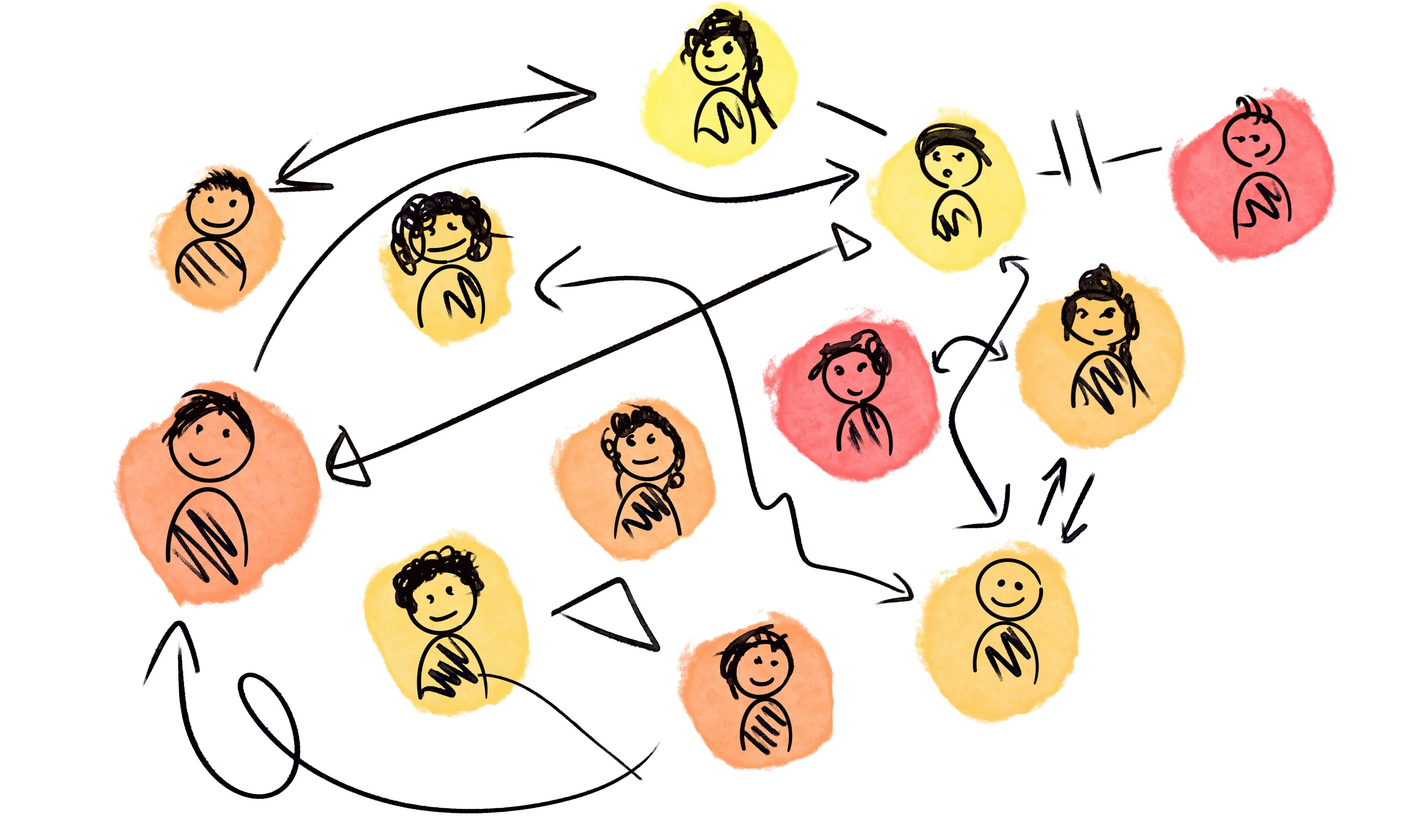Organizing for Innovation: Social vs. Human Resource Management
Managing People and Relationships to Foster Innovation

How should organizations manage their employees to encourage innovation and entrepreneurship? This lecture explores the limits of traditional human resource management (HRM), which focuses on individuals—their skills, performance, and motivation—and introduces a broader perspective: the management of social relationships. Innovation does not only depend on the talent of individuals, but just as much on the networks that connect them.
We examine the emerging shift from HRM to “social resource management1”, where recruitment, evaluation, and development practices are designed with networks in mind. This perspective highlights how collaboration patterns—who interacts, who influences, and where information flows—determine whether ideas can move from conception to implementation. Relational analytics provides organizations with powerful tools to uncover hidden bottlenecks, identify over-reliance on a few central brokers, and reveal opportunities to strengthen collaboration across silos2 .
By connecting the dots between human capital and social capital, the lecture underscores that organizing for innovation is not just about hiring and motivating talented individuals. It is about cultivating the right relational structures in which ideas can travel, gain support, and take root. Firms that manage both individual potential and collective connections are best positioned to turn innovation from aspiration into reality.
Literature
- Soltis, S. M., Brass, D. J., & Lepak, D. P. (2018). Social resource management: Integrating social network theory and human resource management. Academy of Management Annals, 12(2), 537–573. https://doi.org/10.5465/annals.2016.0094
- Leonardi, P., & Contractor, N. (2018). Better people analytics. Harvard Business Review, 96(6), 70–81.
About the Course
The MSc course Innovation & Entrepreneurship in Context examines how entrepreneurs and organizations create and sustain innovation within their broader environment. Core themes include creativity, entrepreneurial identity, legitimacy, networks, and opportunity structures, with an emphasis on how these factors shape the success of new ventures and the renewal of established firms.
Students engage in interactive lectures, case studies, and team assignments that connect theory to practice. They learn to analyze innovation and entrepreneurship holistically, evaluate internal and external influences, and develop evidence-based recommendations for real companies. Assessment combines a group case study and presentation with an individual exam.
See Soltis, S. M., Brass, D. J., & Lepak, D. P. (2018). Social resource management: Integrating social network theory and human resource management. Academy of Management Annals, 12(2), 537–573. https://doi.org/10.5465/annals.2016.0094 ↩︎
Leonardi, P., & Contractor, N. (2018). Better people analytics. Harvard Business Review, 96(6), 70–81. ↩︎
Related Posts

Teaching Lectures
From issue-selling to execution: how social dynamics shape idea championing and implementation.

Teaching Lectures
This lecture explores how networks and social capital fuel idea generation and elaboration in innovation.

Teaching Lectures
Discover how entrepreneurial thinking and innovation management help organizations thrive in a changing world

Teaching Lectures